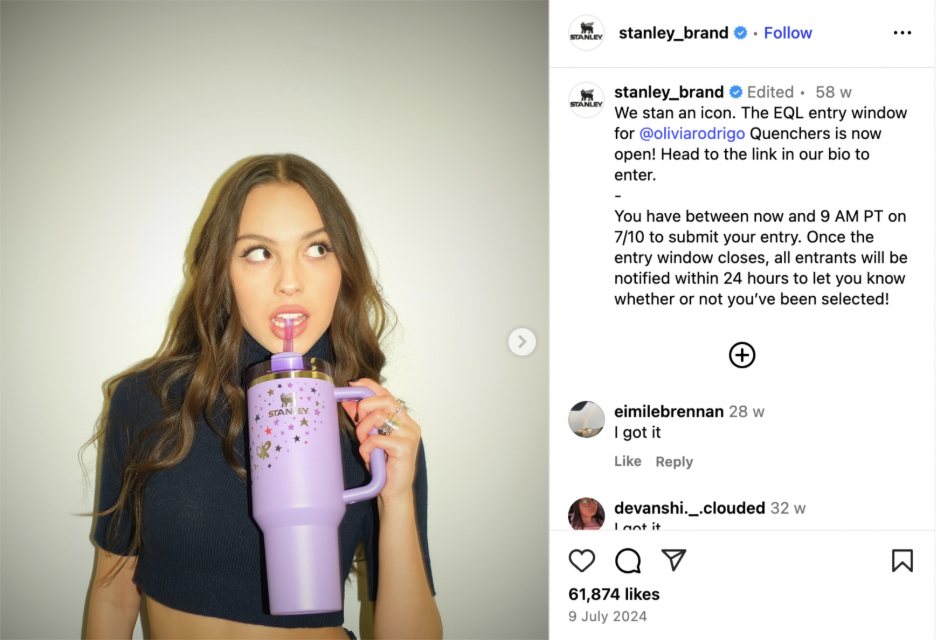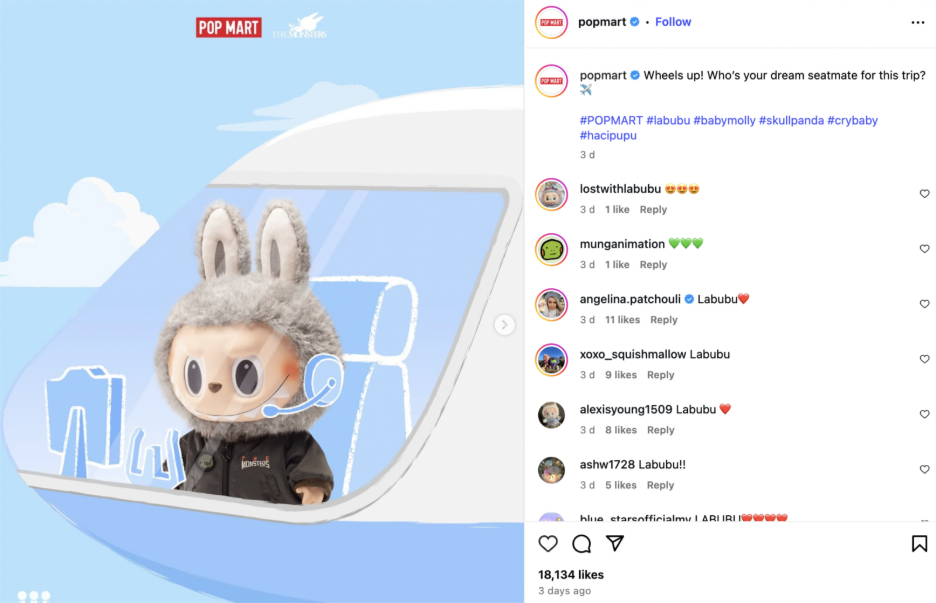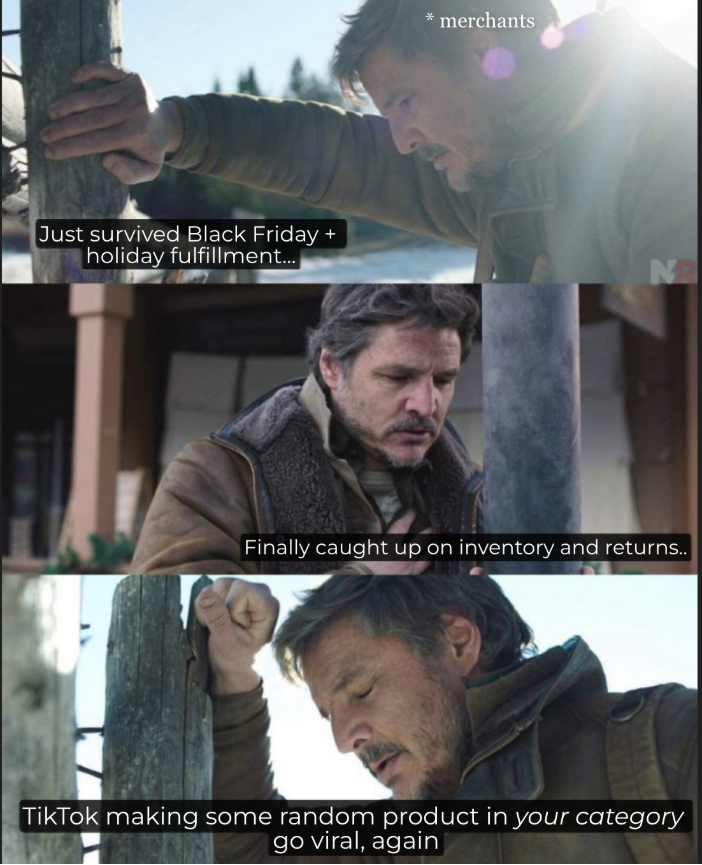

TL; DR
- Anchor cycles → predictable demand (holidays, back-to-school, Valentine’s).
- Wave cycles → viral surges (TikTok hauls, aesthetic-driven buys).
“I live my life a quarter mile at a time.” - Vin Diesel, Fast & Furious.
Sure, he wasn’t talking about TikTok trends when he said it. But when you scroll your feed today, doesn’t it feel like the same thing applies to products? Like, one moment it’s the Stanley Cup, the next it’s Owala bottles with pastel lids.
Stanley went from $70M revenue in 2019 to $750M by 2023, powered almost entirely by TikTok hauls, but as the meme cycle turned, Owala grabbed the wheel.

And it’s not just drinkware though. Did you know?

Meanwhile, the steady anchors haven’t gone anywhere. Laptops and appliances still follow the same seasonal spikes, predictable, cultural patterns you can plan for months in advance.
But layered on top of those steady anchors is a faster, influencer-driven cycle. TikTok, Instagram, Pinterest, and YouTube can push a skincare hack, kitchen gadget, or fashion dupe into millions of feeds overnight, only for the trend to fade weeks/months later when the algorithm moves on.
Social media has compressed trend cycles into weeks or months but rarely seasons.
For merchants, this means planning around two overlapping cycles:
Together, these cycles define today’s consumerism: steady seasonal demand alongside fast-moving viral trends.

Let's get to know them even better,
Here’s the thing about anchors, they don’t really change.
These are slow burns. The reliable, no-drama patterns you can build inventory, logistics, and cash flow around.
Like,
And it’s not just about holidays.
Why it matters:
Anchors give you breathing room. You can plan ahead, secure better pricing with suppliers, and optimize fulfillment for volume - not volatility. They're also where AOV is highest and margin stacking works best (bundles, protection plans, upsells).
They won’t go viral. But they won’t disappear overnight either.
That’s why smart merchants treat anchors like infrastructure. Set it, scale it, optimize it, then use waves for the upside.
In fact, we talked about it clearly here: The smartest move e-commerce retailers are making for peak shopping season 2025. Take a look if you haven’t already.

If anchor cycles are predictable, wave cycles are anything but.
They’re fast, unpredictable, and scroll-fueled. One product blows up on TikTok, spikes in sales overnight, and fades just as quickly once the feed moves on. There’s no calendar. No season. Just speed.
For example,
Trends sound fun on TikTok. In reality? They put pressure on inventory, shipping, and customer experience in ways most merchants aren’t set up for. Here’s what’s realistic to expect ,and how to prep.
For merchants, this isn’t just a fun trend-watch. It’s a shift in how demand shows up, how fast it moves, and how risky it gets.
👉 Your move: Work with suppliers or wholesalers who allow flexible MOQs (minimum order quantities). It is better to test 200 units and restock than sit on 2,000 when the trend dies.
👉 Your move: Invest in clear comms. Automated shipping updates, transparent timelines, and options like priority shipping upsells make the difference.
👉 Your move: Build a “rapid content kit” (templates, influencer briefs, 15-sec ad formats) you can launch in a week or so.
👉 Your move: Set guardrails. Decide upfront how much of your buy budget goes to “trend bets” (e.g., 10%). That way, even if they flop, your anchor categories keep the business safe.
👉 Your move: Borrow the aesthetic cues of wave trends. Fitness brands leaned into pastel “clean girl” colors; furniture brands leaned into beige minimalism. You don’t need to chase every fad, just keep your offering culturally relevant
FYI: Many merchants use SureBright to make both cycles more profitable. Anchors stay steady with higher AOV, while waves get safer with quick, trust-driven purchases. Our AI-powered product protection averages a 20% warranty attach rate and lifts both retention and conversion.
👉 Curious what this could look like for your store? Test it here
You might think waves don’t affect you if you’re selling furniture, durable electronics, or fitness gear. But here’s the thing they do. Just differently.
Even if you’re not selling the product of the moment, wave cycles still shape how customers discover, evaluate, and buy from you.
The truth? Retail in 2025 isn’t either/or. It’s both/and.
Anchors give you stability, the confidence to forecast, scale, and protect margins.
Waves give you relevance, the spikes of attention you can’t plan for but can’t afford to miss.
The merchants winning now aren’t chasing one clock. They’re running on both.
So, ask yourself: are you only training for the marathon, or are you ready for the sprints too? Because this year, you don’t win by playing one game.
You win by playing both.